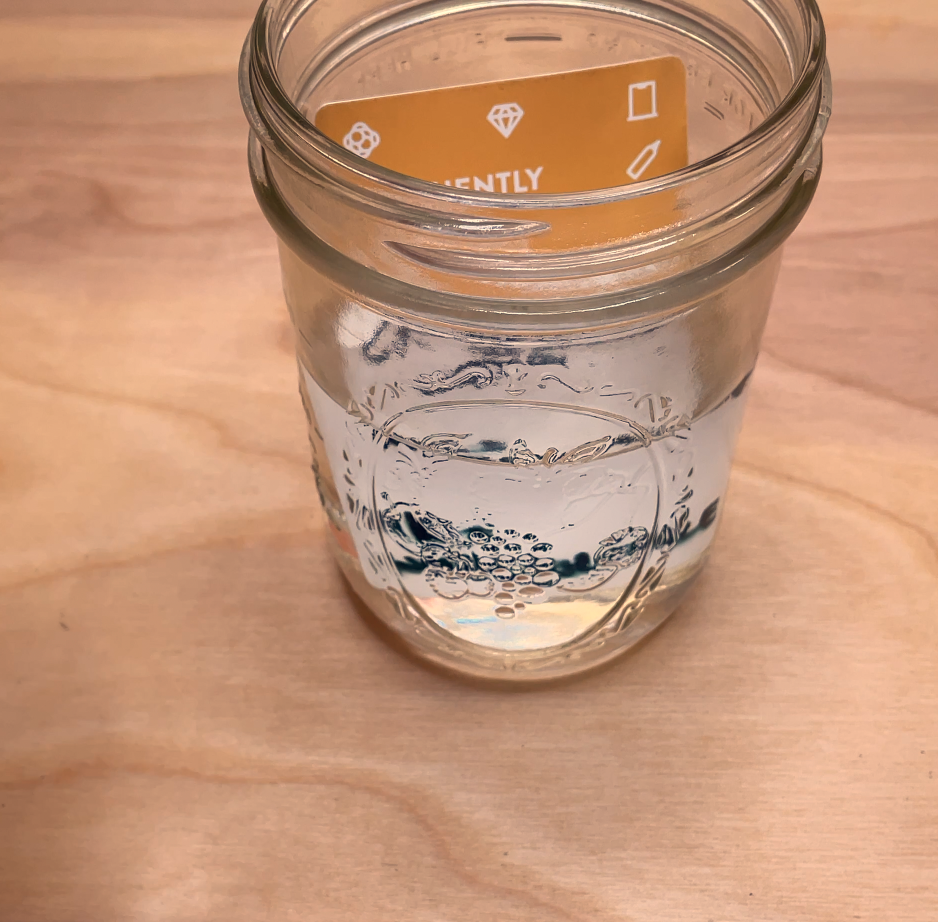Recently, we ran our first session of Card Sharks, which is an opportunity for folks with Facilitator Cards to come together to ask questions, play, and better know their Facilitator Cards. (RSVP here for the next one!)
There were a few questions about waterproofness of the cards, whether you really can write on them, and how to clean them off after you do. Here’s the scoop.
Are the cards really waterproof?
Yes! They really are. The cards are made of plastic (not laminated) so there is no worry that short-term (or even long-term) exposure to water will hurt them.
The only thing that isn’t waterproof is the box. The box is ultimately cardboard, so if you are heading into the woods with these cards (or just biking round Seattle) and you’re worried about the wet, ditch the box and you can be worry free.
Can I really write on them without messing them up? Reassure me.
People are fond of their shiny new decks and some were understandably nervous about writing on them. But rest assured you will not mess up your decks by writing on them when you use wet-erase markers to do so.
You probably know wet-erase markers as overhead transparency markers or “grad school” markers as one of our Card Sharks mentioned today. When we were developing Facilitator Cards we tried numerous types of plastic to find one that wouldn’t stain, wouldn’t smudge, and would erase like a charm. And when we found one, we made the cards out of it. I’ll prove it to you.
And if you forget to erase your notes right away, that’s all good. I’ve got cards that I wrote on six months ago and when I went to erase them today, the ink came right off. No staining, no residue, no problemo.
My favorite markers and the easiest ones to find are the Vis-à-Vis wet-erase markers by Expo. That’s what you’re seeing in the video and they are my go-to marker for writing on my Facilitator Cards.
How Can I Clean the Cards?
The easiest way is just to give them a quick wipe-down with a damp cloth or paper towel. If you’ve just facilitated for a week or you’re like me and don’t erase them until most your cards are covered in writing, it’s even faster to throw them in a sink and then just dry them off. I’ve done it and it’s kinda fun.

Bonus: Why Wet-Erase and Not Dry-Erase?
The simple answer is friction. Dry-erase comes off when you apply friction, which is great because it comes off easily but is also not great because it comes off easily. We wanted you to be able to write your notes for your next workshop on your card, stack them up, throw them in your bag, and know when you pulled them back out again, your notes would be there. Erasing from friction then was a problem.
Wet-erase solves this problem because once the ink dries a few seconds after you write on the cards it won’t come off until you add water.
Low Maintenance, Highly Durable
Facilitator Cards were built to last. Our goal in designing them was that they’d be a one time purchase and you’d be able to use them and reuse them for years to come.
We’ve got a Card Shark who’s going to be taking the cards into the field for some ‘standing on them in the mud’ testing next week (no joke), so we’ll update this post with any necessary caveats (or photo brags) in the future.
Until then, happy facilitating!
Facebook Discussion 💬 Join our Group 🤓
